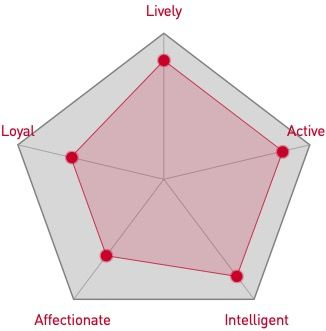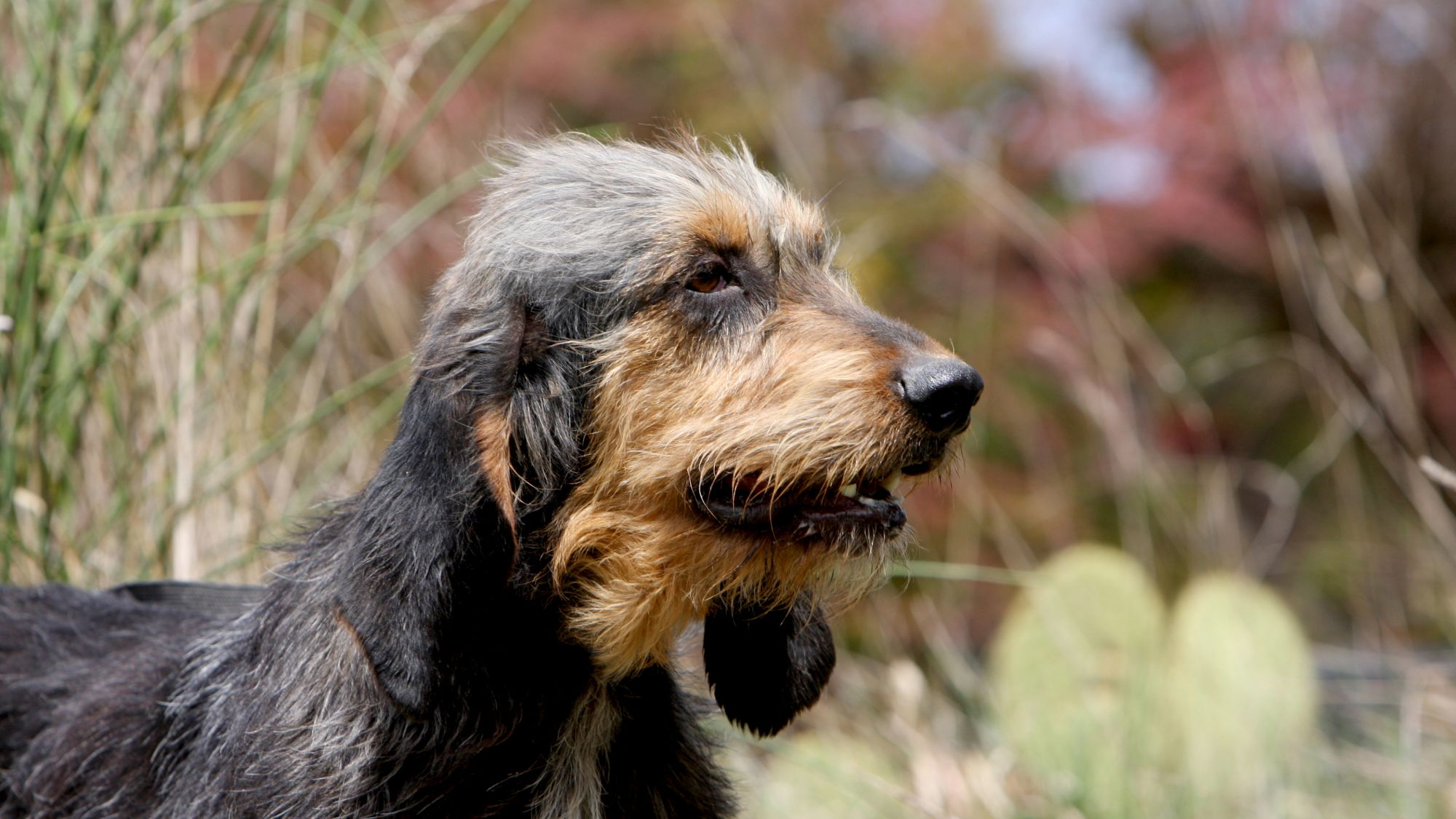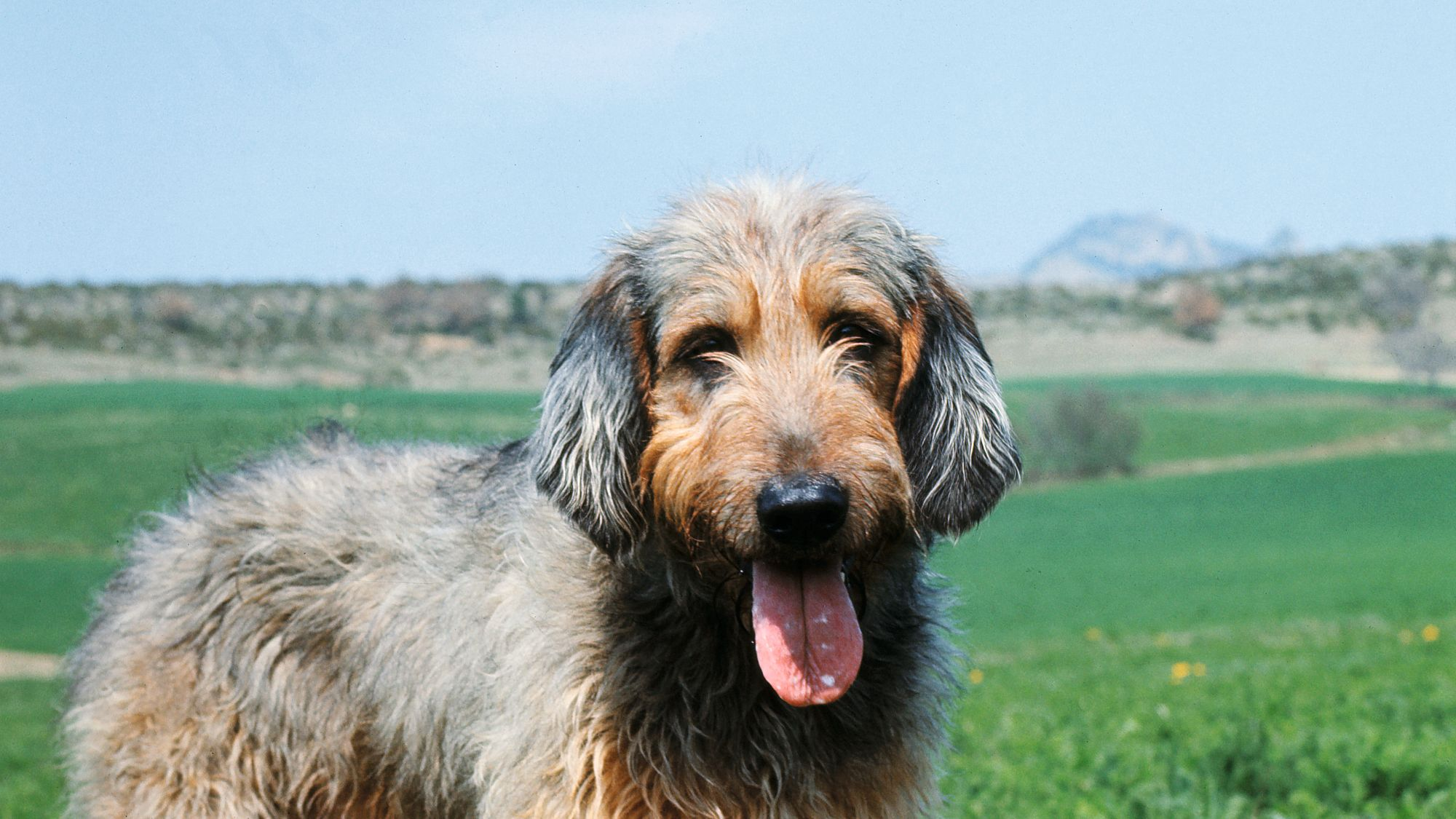
Let's talk Griffon Nivernais dogs
The Griffon Nivernais breed can be characterised by three distinct qualities: Playful, affectionate, and extremely vivacious. Upon first glance, they might look a bit disheveled with their shaggy coat; however, the Griffon Nivernais’ French origins reveal their close connection to royalty. In fact, the breed was the chosen dog by Louis IX, until François I shifted towards another favoured breed several hundred years later. Although the breed might have been originally developed for its notable hunting abilities, the Griffon Nivernais is better known now for being a high-energy, yet devoted family dog—ready for any and all active adventures outdoors.
Official name: Griffon Nivernais
Origins: France

| Drooling tendencies: |
|
Warm weather? | |
| Shedding level: |  |
Suited to apartment living? * | |
| Energy level (high, low, medium) *: | Moderate | Friendly pet?; |
 |
| Compatibility with other pets: |  |
Can stay alone? * |
* We advise against leaving pets alone for long stretches. Companionship can prevent emotional distress and destructive behaviour. Speak to your veterinarian for recommendations.
Every pet is different, even within a breed; this snapshot of this breed’s specifics should be taken as an indication.
For a happy, healthy and well-behaved pet, we recommend educating and socialising your pet as well as covering their basic welfare, social and behavioural needs.
Pets should never be left unsupervised with a child.
All domestic pets are sociable and prefer company. However, they can be taught to cope with solitude from an early age. Seek the advice of your veterinarian or trainer to help you do this.


| Baby age: | Birth to 2 months |
| Puppy age: | 2 to 12 months |
| Adult age: | 1 to 7 years |
| Mature age: | 7 to 10 years |
| Senior age: | From 10 years |

1/7
Get to know the Griffon Nivernais
All you need to know about the breed
Historically, the full-of-life and energetic Griffon Nivernais was developed mainly for sporting purposes—specifically to hunt larger animals. So, while the Griffon Nivernais might initially give off a somber and disheveled look, they are largely celebrated for their highly confident, wildly dynamic, and fearless character.
One very important aspect of the Griffon Nivernais’ temperament that cannot be ignored: Their intuitive field tendencies makes them anything BUT inactive, so be prepared to unleash their energy in big outdoor spaces. Taking this into account, though the Griffon Nivernais is able to adapt to city life or an apartment living situation, they would fare better in a rural environment, where they can have wide open space.
Above all, the Griffon Nivernais is considered a superb companion dog that harmonises well with both children and other dogs in a household setting, once trained. Although their prey drive remains ever present, the Griffon Nivernais breed can also become tolerant, and even doting, of other smaller-sized pets, such as cats, again with early training.
Goal-oriented and intelligent, the Griffon Nivernais could spend all hours of the day using their brain to problem solve. So make sure they stay busy: In the park, in the forest, anywhere really. You will want to exhaust their physical and mental batteries as much as you can outdoors.

2/7
2 facts about Griffon Nivernais dogs
1. An Iron-willed temperament
Similar to other hunting dogs, the Griffon Nivernais’ “strong-headed” nature is often due to their high intelligence and natural confidence. When attempting to teach them new tricks or commands, the Griffon Nivernais can lean towards resistance, but as long as you are consistent with training and stick to mentally stimulating activities, you will have no trouble staving off any rebellious behaviour.
2. Barking up the wrong tree
You read that correctly: The Griffon Nivernais is no stranger to using its voice when alerted. They have been described to have a “melodious” bay, but not everyone – especially your neighbours – will appreciate it. Rest assured, this unpleasant barking behaviour can be headed off at the pass with early training and plenty of mental and physical stimulation on a daily basis.
History of the breed
Records of the Griffon Nivernais breed’s origins date back to the 1200s, making it one of the oldest hunting dogs in all of France. A very popular dog amongst French kings, most notably Louis IX, the Griffon Nivernais was formerly referred to as the “Chien Gris de St. Louis” or the “Grey Dog of St. Louis.” As it stands, their notoriety in royal culture naturally abated over several centuries, when Francois I replaced the breed’s high ranking in society with other canine varieties.
After the French revolution, the Griffon Nivernais’ population size saw a sharp decline, but the breed experienced a resurgence in the early 20th century, when fieldsmen started ‘redeveloping’ the breed by combining the Grand Griffon Vendéen with various Otterhounds and Foxhounds.
Although not formally recognised by the American Kennel Club (AKC), the Griffon Nivernais is recognised with the American Canine Association Inc. and as a Scenthound in the United Kennel Club (UKC).

4/7
From head to tail
Physical characteristics of Griffon Nivernais dogs
1. Coat
Long, shaggy coat, with thick texture.
2. Ears
Medium-length, drooping ears that curve slightly inward.
3. Head
Elongated head, rectangular-shaped muzzle, and deep chest.

5/7
Things to look out for
From specific breed traits to a general health overview, here are some interesting facts about your Griffon Nivernais

6/7
Caring for your Griffon Nivernais
Grooming, training and exercise tips
Despite their long, shaggy coat, the Griffon Nivernais is considered low maintenance when it comes to grooming: Their coarse coat rarely gets matted. However, a good coat brushing once or twice a week will remove any loose hairs. But don’t assume that once brushed, the Griffon Nivernais’ fur will appear fluffed and shiny—their classic disheveled look will always remain.
When it comes to training, the Griffon Nivernais can be described as having an ‘independent streak’. If you are training the Griffon Nivernais to scent, it will be a walk in the park. But asking them to perform tasks that are foreign to them, like obedience training or agility, might yield varied results. This breed can be reluctant to follow commands that they do not enjoy – yes, really – and are best suited to those who have experience with breeds from the same group.
7/7
All about Griffon Nivernais dogs
In any normal situation, the Griffon Nivernais is a calm dog and does not often exhibit aggressive behaviour. Their agile temperament makes the Griffon Nivernais excellent family dogs, ready to co-exist peacefully once trained with all humans and animals alike.
The short answer is yes. However, seasonally and not excessively! If you make sure to brush your Griffon Nivernais at least once a week, loose hairs should never amount to worry or trouble for you or your carpet.
translations.feature.breeds.otherbreeds
Read more on this topic

How your dog's nutrition needs change with age

How to adopt a dog

Things to consider before getting a dog
Sources
1 - Veterinary Centers of America https://vcahospitals.com/
2 - Royal Canin Dog Encyclopaedia. Ed 2010 and 2020
3 - Banfield Pet Hospital https://www.banfield.com/
4 - Royal Canin BHN Product Book
5 - American Kennel Club https://www.akc.org/


